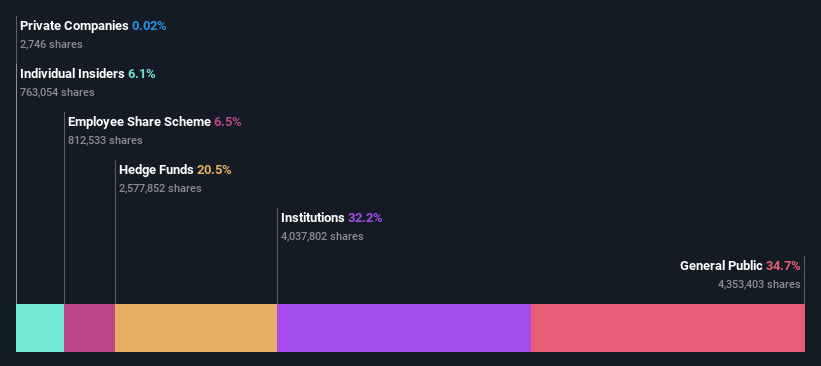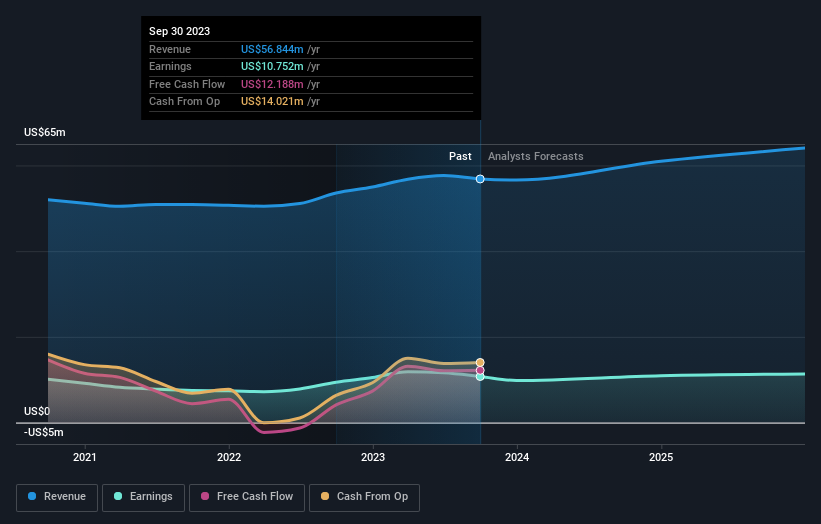BankFinancial Corporation's (NASDAQ:BFIN) top owners are retail investors with 35% stake, while 32% is held by institutions
Key Insights
Significant control over BankFinancial by retail investors implies that the general public has more power to influence management and governance-related decisions
The top 9 shareholders own 52% of the company
If you want to know who really controls BankFinancial Corporation (NASDAQ:BFIN), then you'll have to look at the makeup of its share registry. We can see that retail investors own the lion's share in the company with 35% ownership. Put another way, the group faces the maximum upside potential (or downside risk).
Meanwhile, institutions make up 32% of the company’s shareholders. Generally speaking, as a company grows, institutions will increase their ownership. Conversely, insiders often decrease their ownership over time.
Let's take a closer look to see what the different types of shareholders can tell us about BankFinancial.
Check out our latest analysis for BankFinancial
What Does The Institutional Ownership Tell Us About BankFinancial?
Many institutions measure their performance against an index that approximates the local market. So they usually pay more attention to companies that are included in major indices.
As you can see, institutional investors have a fair amount of stake in BankFinancial. This implies the analysts working for those institutions have looked at the stock and they like it. But just like anyone else, they could be wrong. If multiple institutions change their view on a stock at the same time, you could see the share price drop fast. It's therefore worth looking at BankFinancial's earnings history below. Of course, the future is what really matters.
Our data indicates that hedge funds own 21% of BankFinancial. That catches my attention because hedge funds sometimes try to influence management, or bring about changes that will create near term value for shareholders. M3F, Inc. is currently the company's largest shareholder with 9.8% of shares outstanding. Meanwhile, the second and third largest shareholders, hold 7.0% and 6.5%, of the shares outstanding, respectively. Additionally, the company's CEO F. Gasior directly holds 2.5% of the total shares outstanding.
We also observed that the top 9 shareholders account for more than half of the share register, with a few smaller shareholders to balance the interests of the larger ones to a certain extent.
While it makes sense to study institutional ownership data for a company, it also makes sense to study analyst sentiments to know which way the wind is blowing. While there is some analyst coverage, the company is probably not widely covered. So it could gain more attention, down the track.
Insider Ownership Of BankFinancial
While the precise definition of an insider can be subjective, almost everyone considers board members to be insiders. The company management answer to the board and the latter should represent the interests of shareholders. Notably, sometimes top-level managers are on the board themselves.
Most consider insider ownership a positive because it can indicate the board is well aligned with other shareholders. However, on some occasions too much power is concentrated within this group.
Our most recent data indicates that insiders own some shares in BankFinancial Corporation. In their own names, insiders own US$6.9m worth of stock in the US$113m company. This shows at least some alignment, but we usually like to see larger insider holdings. You can click here to see if those insiders have been buying or selling.
General Public Ownership
With a 35% ownership, the general public, mostly comprising of individual investors, have some degree of sway over BankFinancial. This size of ownership, while considerable, may not be enough to change company policy if the decision is not in sync with other large shareholders.
Next Steps:
It's always worth thinking about the different groups who own shares in a company. But to understand BankFinancial better, we need to consider many other factors.
I like to dive deeper into how a company has performed in the past. You can access this interactive graph of past earnings, revenue and cash flow, for free.
If you would prefer discover what analysts are predicting in terms of future growth, do not miss this free report on analyst forecasts.
NB: Figures in this article are calculated using data from the last twelve months, which refer to the 12-month period ending on the last date of the month the financial statement is dated. This may not be consistent with full year annual report figures.
Have feedback on this article? Concerned about the content? Get in touch with us directly. Alternatively, email editorial-team (at) simplywallst.com.
This article by Simply Wall St is general in nature. We provide commentary based on historical data and analyst forecasts only using an unbiased methodology and our articles are not intended to be financial advice. It does not constitute a recommendation to buy or sell any stock, and does not take account of your objectives, or your financial situation. We aim to bring you long-term focused analysis driven by fundamental data. Note that our analysis may not factor in the latest price-sensitive company announcements or qualitative material. Simply Wall St has no position in any stocks mentioned.


